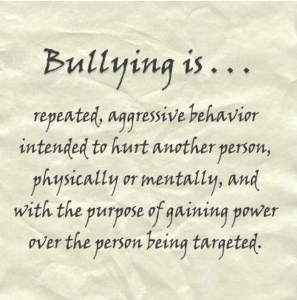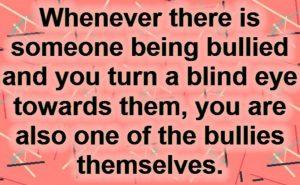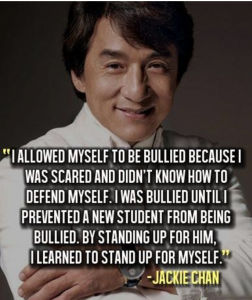Teenage Bullying
Millions of Teenagers are Affected by Bullying
Teenage bullying is really just another form of abuse: it’s about teens using power to control other teens, with the intention to cause harm. It’s not an accident or joke—it’s a repetitive action that happens to a designated person or group over a period of time.
Bullies dominate, blame and use others. They see weaker kids as their target, and don’t accept the consequences of their actions. Teenagers bully for many different reasons. Bullying can be physical, social and/or emotional, but it can also be online cyberbullying, which is a 24/7 threat.
20% of teenagers report being bullied. Statistics on bullying vary dramatically, but 20% is a reliable and conservative number. The percentage of teenagers in vulnerable groups, such as those with a disability or who identify as LGBTQ, is dramatically higher (3-4 times higher).
There is no one characteristic or aspect that indicates who gets bullied. However, the main reasons people are bullied revolve around being different – because of appearance, social status, disability, race or religion, gender, sexual orientation, etc.

Effects of Teenage Bullying
Bullying Can Cause Targets to Experience:
- Fear
- Depression
- Loneliness
- Anxiety
- Low self-esteem
- Physical illness
- Suicidal thoughts
- Anger and impulsivity
Targets of Bullying Can Become:
- Afraid to use digital devises
- Afraid to go to school
- Afraid to ride the bus or walk to school
- Afraid to use the school bathroom, hallway or other areas
- Unable to focus at school and uninterested in school activities
- Unable to get enough sleep
- Unable to eat well
- Isolated from friends and family
- Uninterested in formerly enjoyable experiences
Bullies are Also Affected
When bullies bully others they miss the chance to get their needs met in more effective ways – ways that are better for them and for others.
Cyberbullying
Cyberbullying is a growing and very dangerous form of bullying. It’s digital abuse. There are four factors that make cyberbullying particularly problematic:
- Cyberbullying is 24/7. There is nowhere to hide from the bullying.
- Most digital information is permanent and public.
- Cyberbullying is hidden. People other than the target may not be able to see the bullying.
- It can be anonymous. The bully doesn’t have to publicly attack their target.
Who is Involved in Bullying? Who Can Act?
There are primarily six sets of players involved in a teenage bullying situation. Each player has strategies they can use to prevent, stop or counter the bullying. In most situations, it is a combination of players acting that makes the difference. The players that can make the biggest difference in most situations are the upstanders.
- The target of the bullying
- Bystanders
- Upstanders
- Parents
- The organization in which the bullying happens – usually schools
- Bullies
Targets of Bullying
Standing up to bullies may be one of the hardest things you will do in life, but it’s almost always worth it. It’s not easy and there is no recipe for doing it, but there are some guidelines and strategies that you can put together.
My self-worth is not linked to your cruel words and action. My self-esteem is not affected by your deliberate attempts to destroy my character. You have no power over me. You will not silence me.
Unknown
Bystanders to Teenage Bullying
Bystanders are a major part of the bullying problem. 66-85% of bullying takes place in front of others.

There are different types of bystanders – some active and some passive. They all reinforce the bullying and are part of the problem.
- Some bystanders participate in starting the bullying, for instance by prodding or encouraging the bully
- Some bystanders laugh or give attention to the bullying thereby providing an audience and encouraging the bully
- Some bystanders join in the bullying once is started, which can range from physically bullying the target to excluding them from a group or “piling on” in cyberbullying.
- Most bystanders are silent or turn away
There are a number of natural reasons that people choose to be bystanders vs. being upstanders. These reasons have more power when a bystander feels like they would be acting alone. Bullying can have serious consequences for bystanders, ranging from guilt and anxiety to restricted emotions.
Most bystanders want to do the right thing. If you as a peer, parent or educator want to help put an end to bullying and support the bystanders, the best strategy is to empower the bystanders to do what they know is the right thing – to become upstanders.
Upstanders Countering Bullying
Bystanders contribute to the problem. Upstanders stop the problem. Research shows that others speaking out or taking action stops teenage bullying behavior over half the time within seconds.
However, it takes courage to be an upstander. Upstanders are teenagers who do something that prevents or reduces the bullying behaviors they see or provides support to targets. Moving from being a bystander to becoming an upstander may not happen overnight. It can start with small actions and grow with experience and confidence.
Strong people stand up for themselves, but the strongest stand up for others.
Unknown
Upstanders don’t have to do everything but they do need to do some of the following:
- Learn about bullying, from why bullies bully to how to intervene
- Don’t join in the bullying
- Take action by telling the bully to stop
- Stand with the victim and say something
- Take action by getting others to stand up as a group to the bully
- Challenge cyberbullying messages and add positive messages to the target
- Support the target in private—show your concern and offer kindness
- Encourage targets to take action and get help
- Pay attention to those who are new or different and welcome them
- Take action by telling an adult who can help. Do not worry – you are not ratting the bully out by telling an adult. There’s a big difference between tattling and reporting a concern. Tattling is telling to get someone in trouble, reporting is telling to get someone out of trouble.

Parents Countering Teenage Bullying
Parents can play a critical role, but it’s not easy. They can be available, listen and partner with their son or daughter to counter the bullying. It’s important to be partners, not saviors. There is a range of strategies that can be customized to meet the threat. Parents can also be extremely helpful in working with other adults – from school and police to religious communities and neighborhoods.
Schools and Other Organizations
Schools are usually the critical environment and they have a range of strategies they can use to prevent and respond to teenage bullying. Those strategies range from policies and defined support roles to ways of supporting students to be up-standers.
Other organizations can also play key roles, particularly the police, internet service providers and any organization focused on teenagers (sports teams, religious communities, youth groups, etc.).
School administrators can’t say it’s up to the parents. Parents can’t say it’s up to the teachers. Teachers can’t say it’s not their job. And kids can’t say, “I was too afraid to tell.” Every single one of us has to play our role if we’re serious about putting an end to the madness. We are all responsible. We must be.
Megan Kelley
Hall
Bullies – Stopping
If you stop bullying it will be because you have found the integrity to match your actions to your values and because you have found the courage to stand up for yourself and get your needs met in more effective and less abusive ways.
You can’t take pride in having bullied others, but you can certainly take pride in stopping because stopping is rarely easy. That courage and pride will take you a long way in becoming a successful young adult.
Resources
There are a lot of resources at the end of this chapter. They include both websites and videos.
Table of Contents
The Basics
Definition & Types
Cyberbullying
Who Gets Bullied
Effects of Bullying
Why Bullies Bully
Actions
If You are the Target of Bullying
If You are a Bystander
To Be an Upstander
If You are a Parent or Other Adult
If You are in a School
If You are a Bully